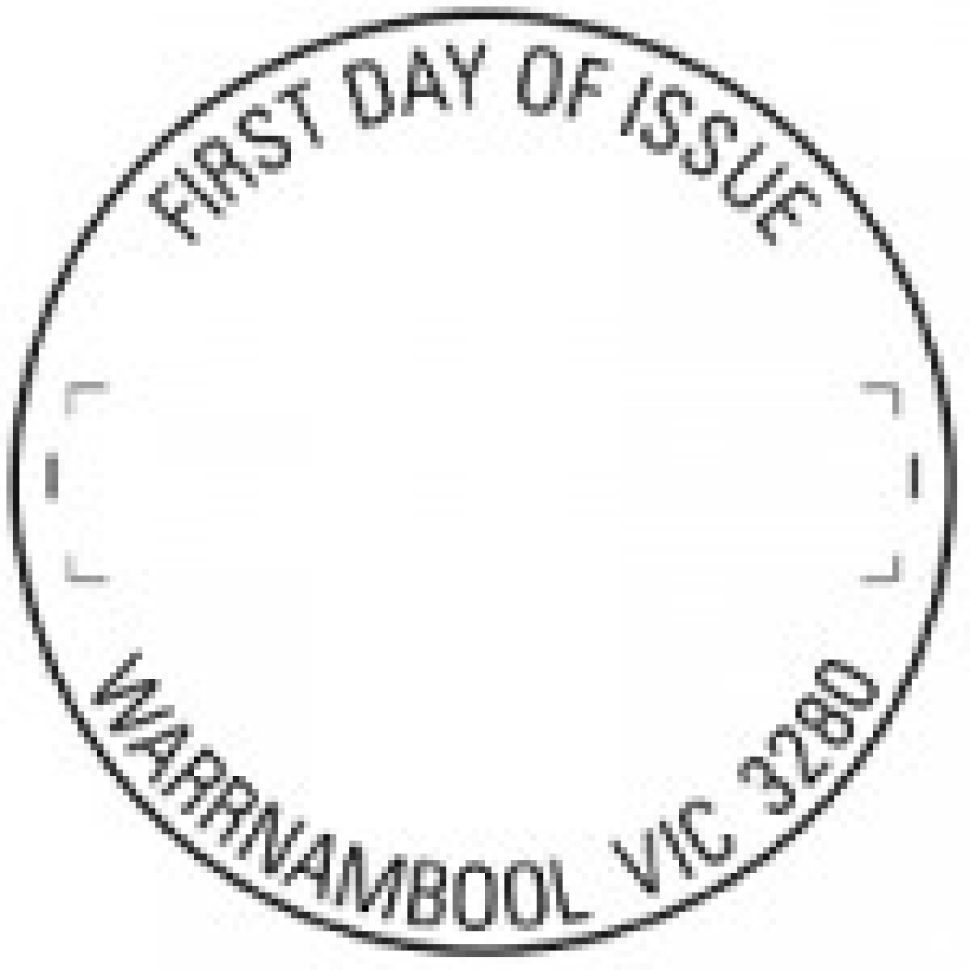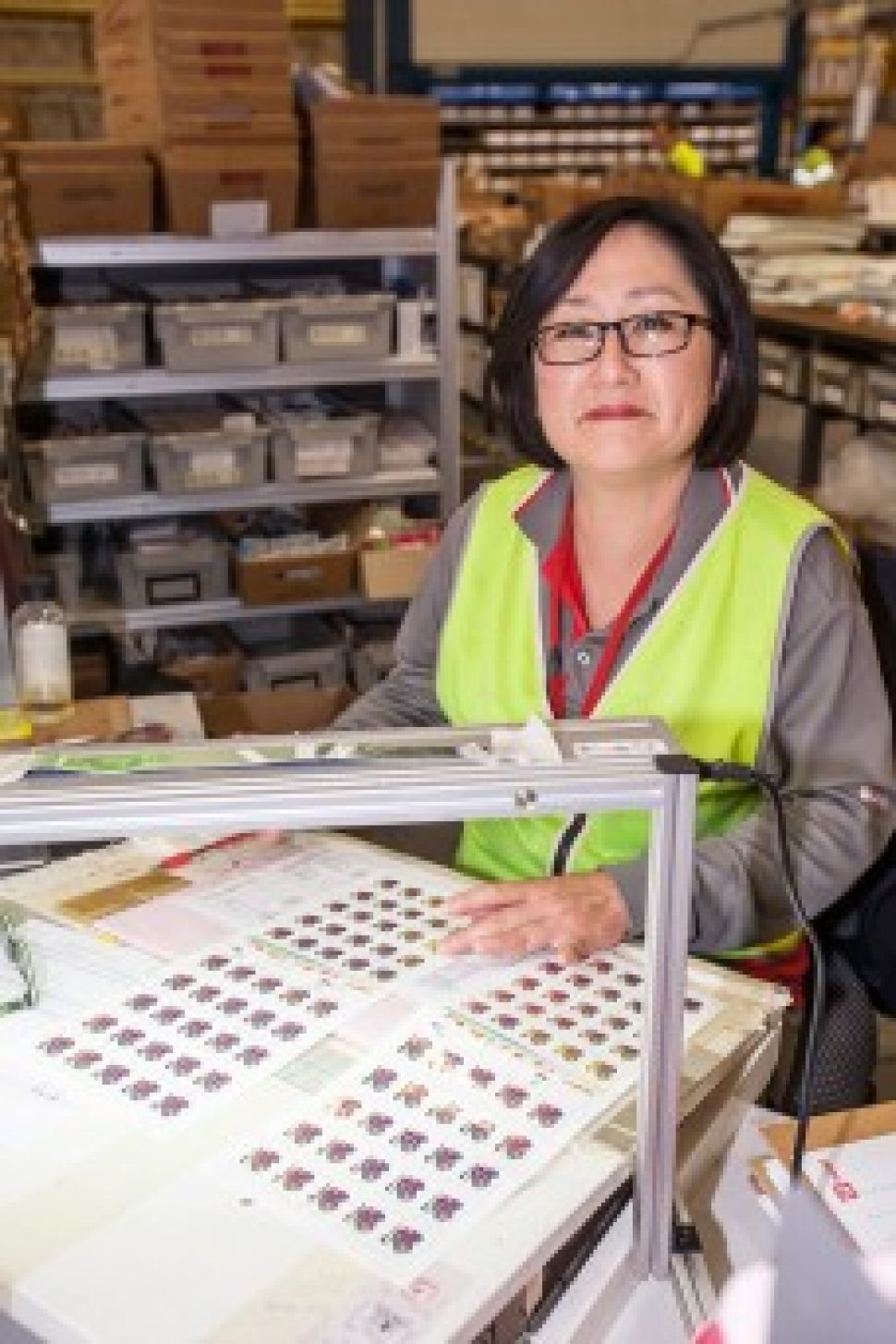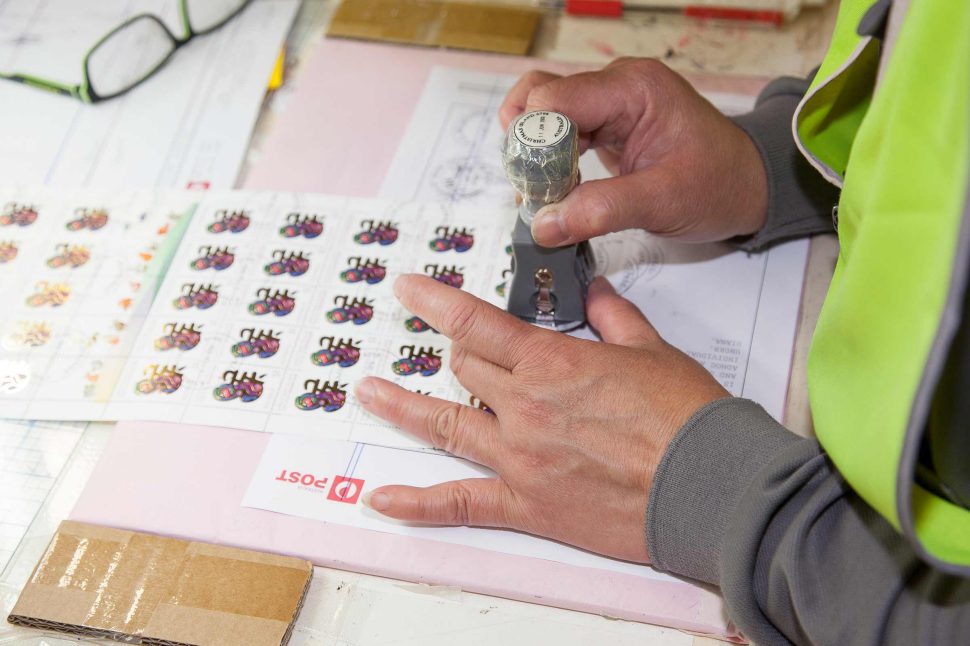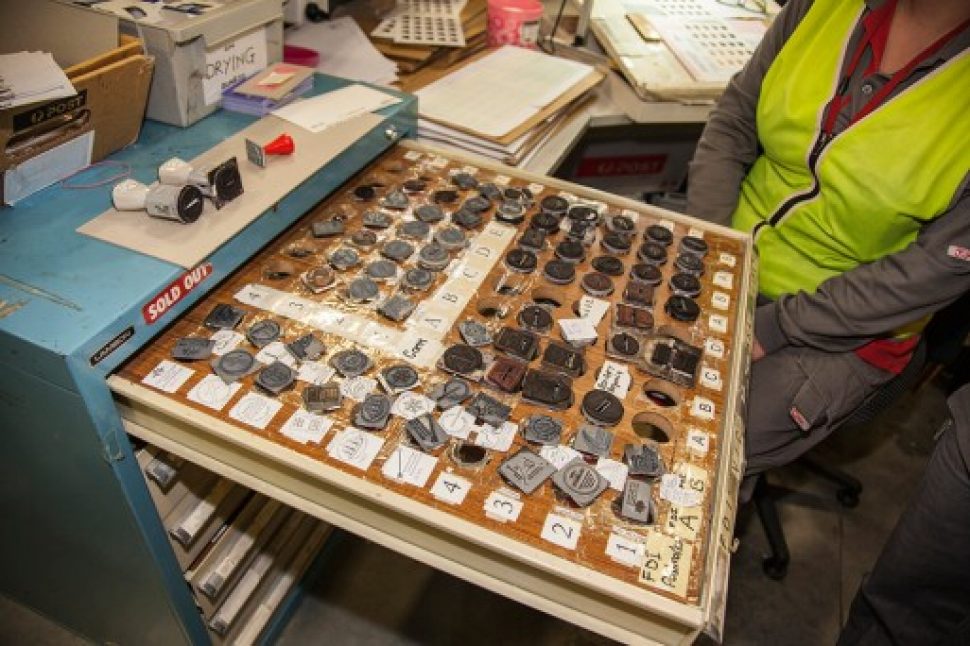Postmarking is an important part of stamp collecting and a hobby in itself. Postmark collectors are very passionate about their hobby and will go to great lengths to get mail articles cancelled to add to their collection.
In this article, the first of our ‘meet our team’ series, we talk to Australia Post’s Postmarking Operator Siew Leong, otherwise known as Esther, about the intricacies of her role and the many interesting postmarking requests she receives from collectors.
Postmarking – an introduction
Postmarks are used to cancel postage stamps on mail items, and to record the date and place the items entered the mailing system. Postmarks comprise a date, a location (which must have a post office attached to it) and a postcode. Postmarks are normally black, although there are occasions when coloured postmarks are used.
Postmarks generally fall into one of the following four types:
National First Day of Issue (FDI)
Postmarks are used to commemorate the release of a new stamp. The locality name is chosen for its link to the stamp issue. Here in Australia, official FDI postmarks usually reflect a location relevant to the topic of the stamps.
Permanent pictorial postmarks
Postmarks for specific areas, reflecting something distinctive to the locality, such as penguins for the town of Penguin in Tasmania or a lighthouse if one is prominent in the area.
Commemorative postmarks
These postmarks, which commemorate a special event, are often referred to as temporary because they are used on either single days or consecutive days only.
Individual location First Day Issue
Postmarks associated with a historical or geographical reflection of the local area and can be used to cancel first day of issue stamps only.
A day in the life of an Australia Post Postmarking operator
Having worked at Australia Post for over eight years, Esther took on the very important role of Australia Post’s official philatelic postmarking officer in 2014, taking main responsibility for fulfilling the requests of many of Australia Post’s philatelic customers.
Her varied job not only involves postmarking some of the new stamp releases issued by Australia Post throughout the year (a proportion of which are also postmarked by machine dependant on the material they are made from) but also ensuring each and every customer’s request for postmarking is delivered with the utmost care and precision.
Talking to Esther you gain great insight into the importance collectors place on postmarking across the globe.
“Every day there is a lot to do, and always something different,” she says.
“When we have new releases I often postmark the associated products, such as mini sheets or first day covers, which are usually prepared a month in advance of the issue date. But the rest of the time I am dealing with specific orders coming from collectors around the globe with explicit instructions for the postmarking requests they require. These often include first day covers, postcards, aerogrammes and even their own special covers. In fact, most customers meticulously spend time creating their own covers to suit their or their clients’ needs,” she comments.
And every customer of course wants to be confident their products will be returned just how they want them: “Postmarking is an art that requires clarity and precision. You need a good eye, but also a quick hand to get through the many requests received from collectors,” Esther continues.
The purpose of a postmark is to indicate that the stamp has been cancelled and to record where and when the item enters the mail system. There are a few ground rules that have to be followed when it comes to applying postmarks. The main issue is positioning.
“When applying a postmark you have to try to only catch the corner of the stamp. When I first started I had to go through a lot of training to ensure I knew how to get it right! I had to apply postmarks to differing sets of stamps and covers over and over again to ensure that my brain got accustomed to putting the postmark in the right place,” Esther says.
Another key concern for collectors involves the clarity and quality of the impression applied:
“Nothing is more annoying for collectors than seeing postmarks applied to items that have ‘fuzzy edges’ or smudges. So you have to be extremely careful. You also have to ensure you use the correct ink which can help prevent postmarks from smudging or even disappearing. And then you have to ensure the ink has dried before you can repackage the orders.”
Quite frequently Esther is asked to postmark new covers, made by individual collectors, with a first day of issue mark. When asked if there is a cut-off period after which first day postmarks cannot be used she explains:
“We have up to four weeks after the first day of issue for new releases when collectors may present (or send) covers for cancellation. This allows people from interstate, or even overseas, the opportunity to add the postmarks to their collections.”
Other considerations Esther always has to be on the lookout for include checking that the value of stamps affixed on the cover total to the current postage rate: “I am always having to make sure that the stamps value meet the postal system requirements if the cover is to go through the mail system, especially for overseas items.”
When asked about the number of postmarks she has to deal with on a regular basis, Esther replies: “There are so many I can’t even count!”, and when you look around Esther’s work station, surrounded by drawers and shelves full of the plethora of old and new, and very sought-after postmarks you can well believe this.
Details of new postmarks, and modifications to existing postmarks, can be found in the Australia Post bi-monthly Stamp Bulletin.
If you have a specific postmarking request please send to:
Australia Post, Sprintpak
Postmarking Department
15 Enterprise Drive
ROWVILLE VIC 3178
This article was produced at the time of publication and will not be updated.








